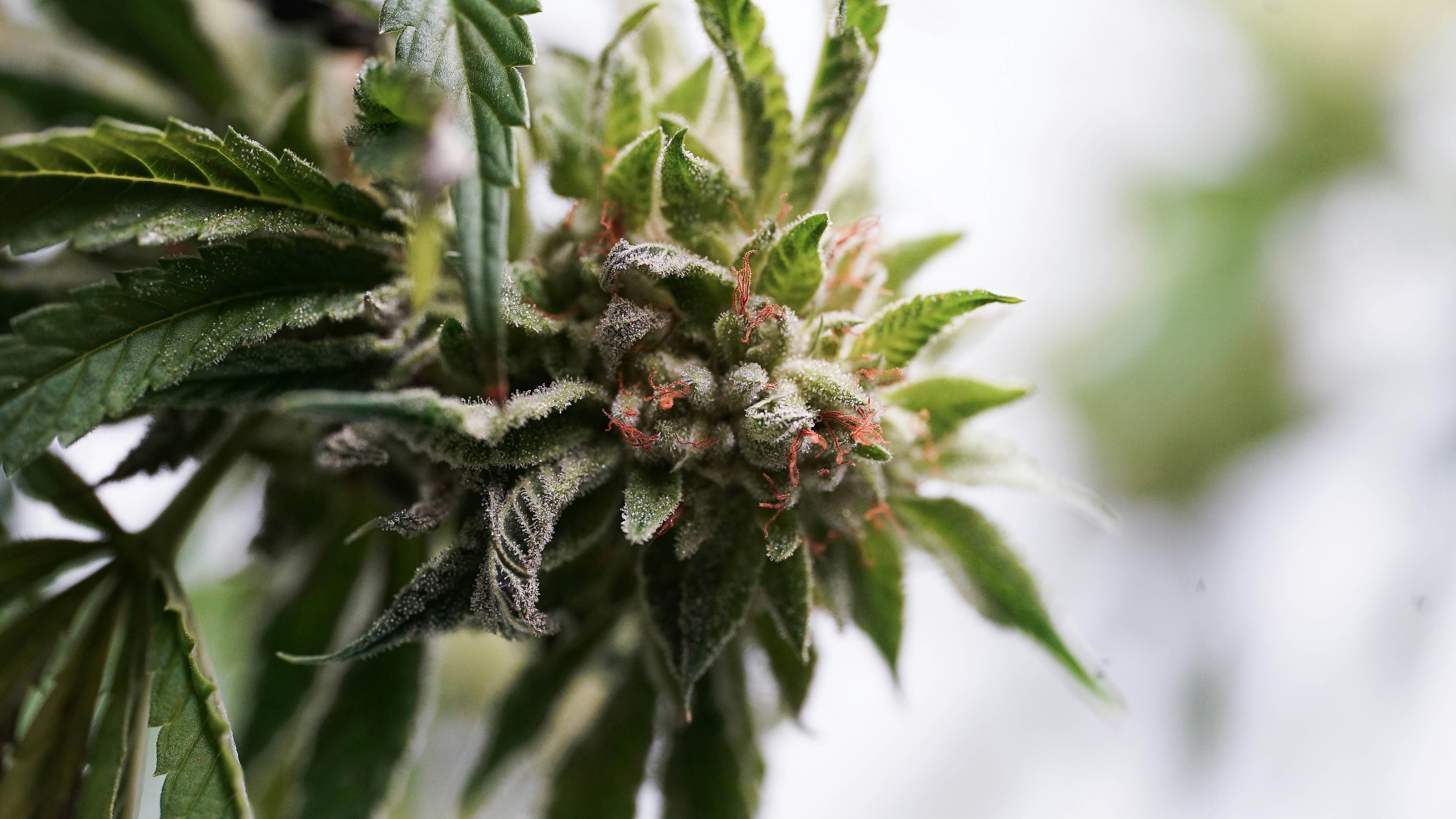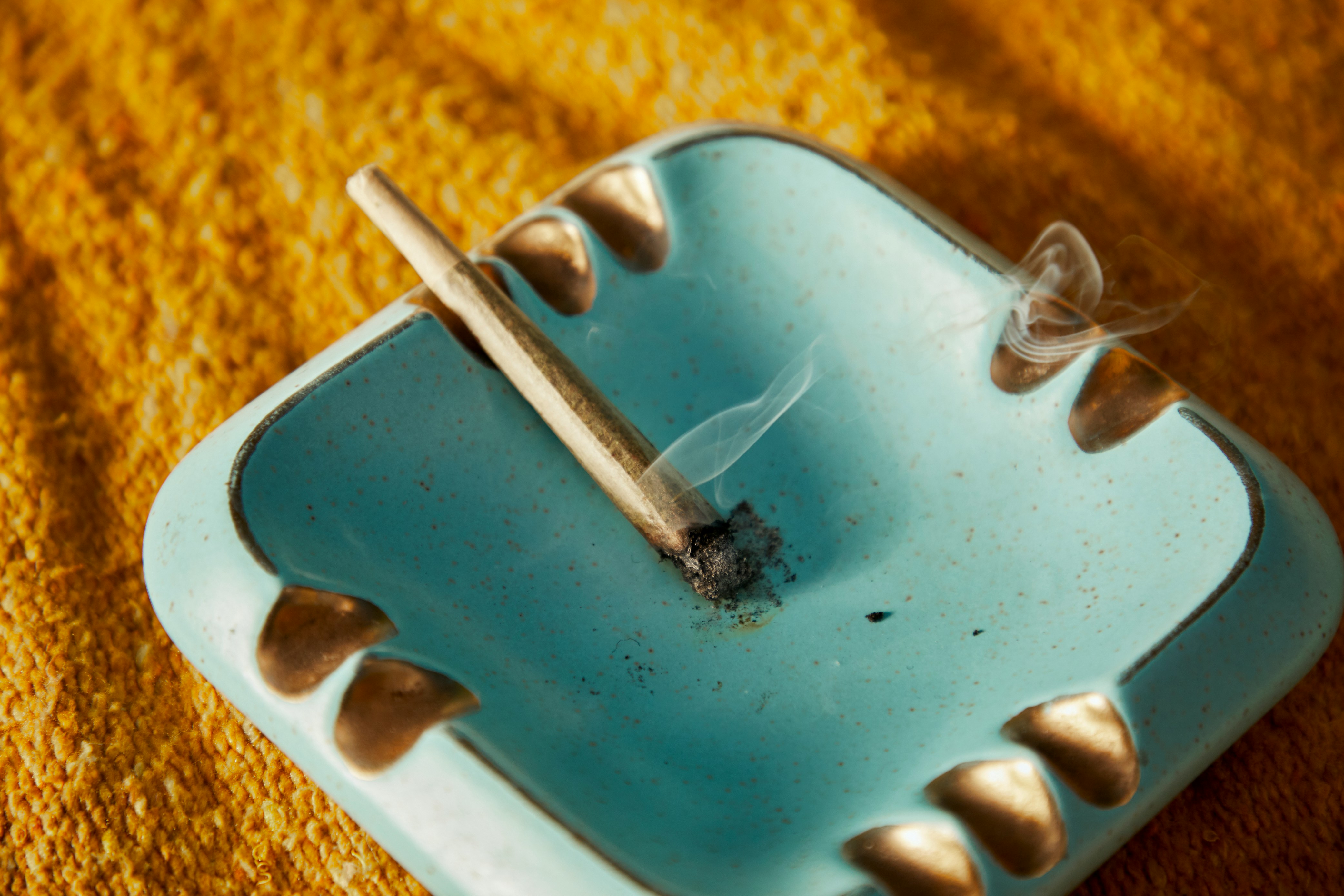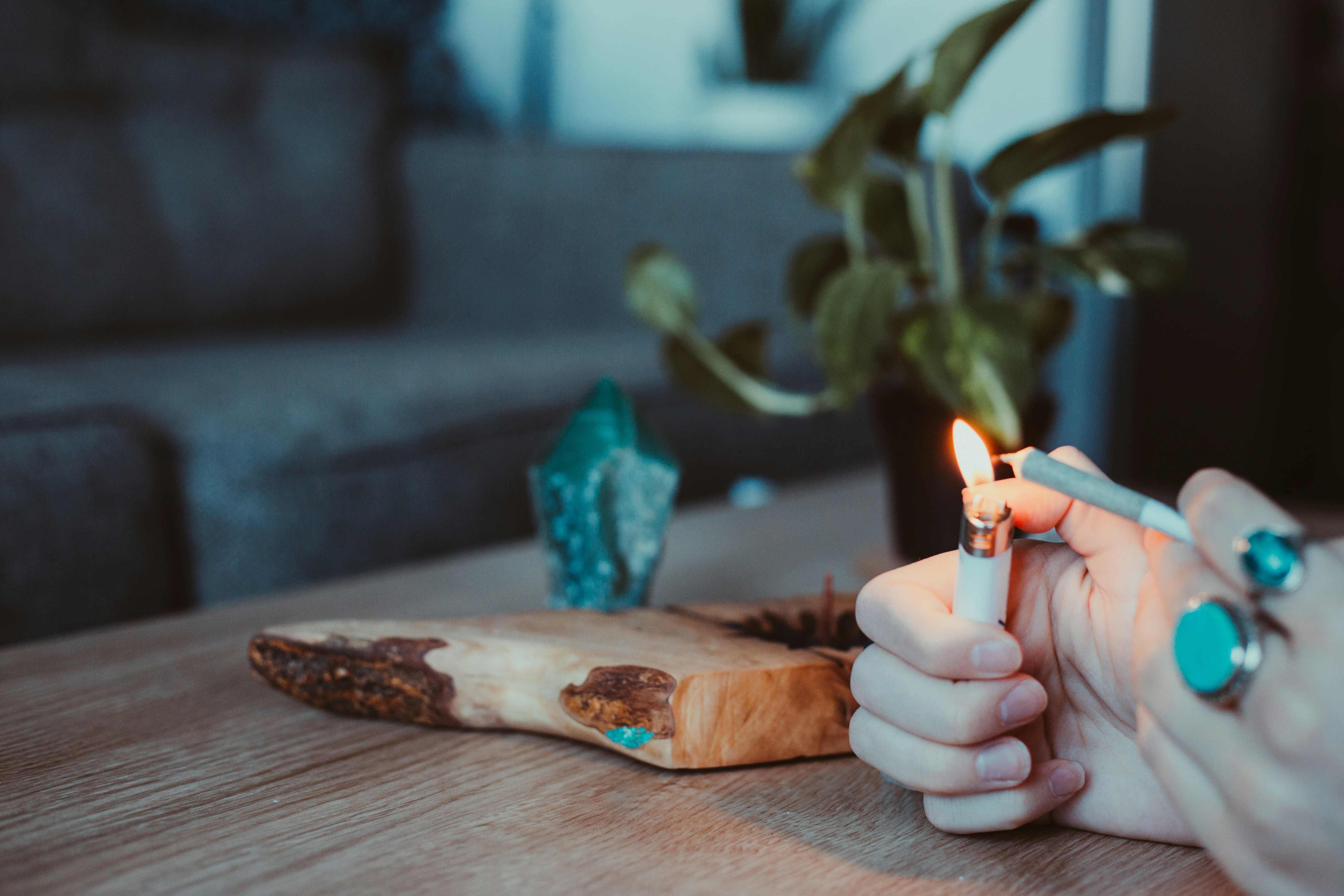So, you've just purchased some high-quality cannabis. You roll it, light it, and take a deep inhale, expecting the usual wave of euphoria and relaxation.
You’d never know this had you not lit up your flower, but now that you’re high, the gears in your brain are moving. You’re asking yourself how exactly this whole “weed getting me high” thing works.
And didn't the packaging say this was THCA flower? Isn't THCA, like, known for being non-psychoactive? How is this flower even getting you high right now? Are you going crazy?
Nah, relax. You’re fine, you’re supposed to be high!
That's the whole point of THCA flower— the magic of decarboxylation! And now that we’ve added a new word to your vocab, what does decarboxylation mean anyway? How does it work?
Well, that's what we’re here to find out! Let’s explore this nifty chemical process.
What is THCA?
THCA, or tetrahydrocannabinolic acid, is a cannabinoid found in raw and live cannabis plants. Unlike THC, THCA does not produce any psychoactive effects.
Instead, it acts as the precursor to THC and is found in high concentrations in freshly harvested cannabis.
THCA is one of many cannabinoids produced by the cannabis plant. It is often found in its highest concentrations in fresh, undried cannabis.
This cannabinoid is known for its potential therapeutic benefits, which are being explored in a variety of medical studies.
But that's not really what we’re here for, is it? The real reason THCA products are gaining popularity is their ability to turn into buzzy, psychoactive THC!
What’s THC Again?
THC, or tetrahydrocannabinol, is the cannabinoid most commonly associated with the psychoactive effects of cannabis.
When cannabis is heated through smoking, vaping, or cooking, THCA undergoes decarboxylation to become THC.
THC interacts with the body's endocannabinoid system, producing the 'high' that recreational users seek and offering therapeutic benefits such as pain relief, appetite stimulation, and anti-nausea effects.
Comparing Cannabinoids: THC vs. THCA
Get ready for a little science here. If you failed high school Chem, welcome to your worst nightmare.
While THCA and THC share a similar chemical structure, the key difference lies in the presence of a carboxyl group (COOH) in THCA, which is lost during decarboxylation to form THC.
This change not only alters the chemical properties but also the way the compound interacts with the brain's cannabinoid receptors.
THCA is non-psychoactive and cannot bind effectively to CB1 receptors in the brain, whereas THC fits perfectly, producing the psychoactive effects.
The molecular structures of THCA and THC are almost identical, with THCA having an extra carboxyl group that THC lacks.
This seemingly minor difference has significant implications. THCA, due to its larger molecular structure, cannot effectively bind to CB1 receptors in the brain, which are responsible for the psychoactive effects of cannabis.
THC, however, fits these receptors like a key in a lock, leading to the well-known high associated with cannabis use. This structural transformation is essential for the psychoactive and therapeutic properties that cannabis is famous for.

What is Decarboxylation?
Now for the good stuff, what is decarboxylation and how the heck does it work?!
Decarboxylation is a chemical reaction that removes a carboxyl group from a molecule, releasing carbon dioxide (CO2).
In the context of cannabis, decarboxylation refers to the process by which THCA loses its carboxyl group to become THC.
Decarboxylation is a fundamental chemical process in cannabis preparation. This process is essential because it converts non-psychoactive cannabinoids into their active forms.
Without decarboxylation, consuming raw cannabis would not produce the psychoactive or therapeutic effects that many users seek.
How Decarboxylation Works: The Chemical Level
On a chemical level, decarboxylation involves the removal of the carboxyl group (COOH) from THCA, converting it into THC.
This reaction is typically induced by heat, which provides the energy needed to break the molecular bonds in THCA. The heat causes the carboxyl group to release as CO2, resulting in the formation of THC.
The decarboxylation process is initiated by heat, which provides the necessary energy to break the bonds holding the carboxyl group to the THCA molecule.
The Discovery of Decarboxylation
The process of decarboxylation has been known for centuries, long before the scientific community fully understood the chemistry behind it.
Traditional methods of cannabis consumption, such as smoking or cooking with cannabis, inherently involve heating the plant material, which inadvertently causes decarboxylation.
Ancient cultures that used cannabis for medicinal and recreational purposes discovered that heating the plant material enhanced its effects.
Whether through smoking, vaporizing, or cooking, these methods naturally decarboxylated the cannabinoids, making them more potent and effective.
It wasn't until the 20th century that scientists began to study and understand the precise chemical reactions taking place.
Decarboxylation Reaction: The Science Behind the Conversion
Decarboxylation is a relatively simple chemical reaction where the carboxyl group (COOH) is removed from THCA, resulting in the formation of THC and the release of carbon dioxide (CO2).
This transformation is essential for converting the non-psychoactive THCA into the psychoactive THC, enabling the user to experience the full effects of the cannabis plant.
Temperature and Time: Key Factors in the Process
The efficiency of decarboxylation is influenced by both temperature and time.
Optimal decarboxylation occurs at temperatures between 220°F (104°C) and 240°F (116°C). Heating cannabis at lower temperatures for longer periods can also achieve decarboxylation, but the process will be slower.
Conversely, higher temperatures can speed up decarboxylation but risk degrading the cannabinoids and terpenes, which can affect the potency and flavor of the cannabis.
Temperature and time are crucial variables in the decarboxylation process.
Achieving the right balance between these two factors ensures that THCA is fully converted to THC without degrading other valuable cannabinoids and terpenes.
Low and slow heating methods can be effective but require patience, while higher temperatures can expedite the process at the risk of diminishing the overall quality of the cannabis.

Methods of Decarboxylation
There are several ways to decarboxylate cannabis. The first and perhaps most obvious is by simply lighting the buds and inhaling, as is done with THCA pre-rolls and loose flower in bongs or bowls.
The same is also true when using THCA vapes. Once your coil heats up your THCA oil, the product undergoes decarboxylation and therefore gets you quite high.
Cannabis flower, however, isn't only used for inhaling purposes. You can make your own homemade edibles with it, you can juice it and create your own THC oil, infuse it into drinks, and much more.
If that's the case for you, a BIC lighter won't cut it. Let’s go over some alternative ways to decarboxylate cannabis.
Oven Decarboxylation: Step-by-Step Guide
Oven decarboxylation is one of the most accessible and popular methods. Here's a step-by-step guide:
- Preheat the Oven: Preheat your oven to 230°F (110°C).
- Prepare the Cannabis: Break up the cannabis buds into small pieces to ensure even heating. Do not grind the cannabis too finely, as this can increase the risk of burning.
- Spread Evenly: Spread the cannabis evenly on a baking sheet lined with parchment paper.
- Bake: Place the baking sheet in the oven and bake for 30 to 45 minutes. Stir the cannabis every 10 minutes to ensure even heating.
- Cool and Store: After baking, let the cannabis cool completely before using it in your desired recipe or storing it in an airtight container.
Oven decarboxylation is straightforward and requires minimal equipment.
It's a reliable method for those who are new to decarboxylation and want a simple, effective way to activate their cannabis.
Using a Decarboxylation Machine: Pros and Cons
Decarboxylation machines offer a convenient and precise, albeit sort of intense, way to decarboxylate cannabis.
These machines are designed to maintain the ideal temperature and time settings for perfect decarboxylation.
- Pros:
- Consistent and precise temperature control
- Easy to use with minimal supervision
- Reduces the risk of burning or uneven heating
- Often designed for optimal cannabinoid and terpene preservation
- Cons:
- Higher initial cost compared to traditional methods
- Limited to specific quantities depending on the machine's capacity
- Dependence on a single-purpose device that may not be necessary for all users
Decarboxylation machines provide a hassle-free experience with the added benefit of precise control over the process.
They are particularly useful for those who frequently decarboxylate cannabis and want to ensure consistent results every time. If you’re not trying to commit to buying machinery just to get buzzed, though, we get ya.
You’ll be better off with a simpler method like just baking or burning your flower.
Alternative Decarb Methods: The Lesser Known
Apart from vaping, smoking, and baking your weed— or buying a special machine for it if you’re into that— there are some lesser-known methods to decarb your cannabis.
- Sous-Vide Method: The sous-vide method involves vacuum-sealing the cannabis and immersing it in hot water maintained at a constant temperature using a sous-vide machine. This method offers precise temperature control and even heating.
- Microwave Method: While not recommended due to its inconsistency and the risk of uneven heating, some users decarboxylate cannabis using a microwave. This method involves microwaving the cannabis in short bursts and checking frequently to prevent burning.
Here are the steps for these methods if you want to go for an obscure decarboxylation practice:
Sous-Vide Decarboxylation
- Prepare Cannabis: Place your cannabis in a vacuum-sealed bag or a zip-lock bag using the water displacement method to remove air.
- Set Temperature: Preheat the sous-vide machine to 203°F (95°C).
- Submerge and Cook: Submerge the bagged cannabis in the water bath for about 90 minutes.
- Cool and Use: Once the time is up, remove the bag from the water bath, let it cool, and then use or store the decarboxylated cannabis.
Microwave Decarboxylation
- Prepare Cannabis: Spread the cannabis evenly on a microwave-safe plate.
- Heat in Intervals: Microwave on medium heat for about 1.5 to 3 minutes, checking and stirring every 30 seconds to prevent burning.
- Cool and Use: Let the cannabis cool before using it.

Why Decarboxylation Matters
In case you haven’t caught on by now, decarboxylation is essential for converting non-psychoactive THCA into psychoactive THC, which is responsible for the 'high' associated with cannabis use.
Without decarboxylation, cannabis would not produce the desired psychoactive effects.
The process of decarboxylation is fundamental to unlocking the full potential of cannabis.
By converting THCA to THC, decarboxylation ensures that users experience the psychoactive effects that are synonymous with cannabis use. This transformation is crucial for those seeking the euphoric and relaxing sensations that THC provides.
So, why does decarboxylation matter? Because without it you couldn't get stoned!
That's a Wrap on Decarboxylation!
As we’ve said, decarboxylation is a critical process in getting stoned. It’s what triggers precursors like THCA to turn into psychoactive substances like THC.
Though it may seem like boring chemistry stuff, this process is what allows us to feel the perfect, happy, buzzy, euphoric effects of cannabis that we love and enjoy.
Sure, you may not need to know how it works to light a joint or pack a bowl, but now your high mind’s curiosity is satisfied: decarboxylation works by using heat to remove the extra carboxyl group in THCA, effectively turning it into THC and allowing it to hold onto your CB1 receptors, producing a psychoactive response in your body.
Whether you’re vaping, smoking, or cooking THCA, you can thank decarboxylation for tearing down the wall between you and a really good high!










